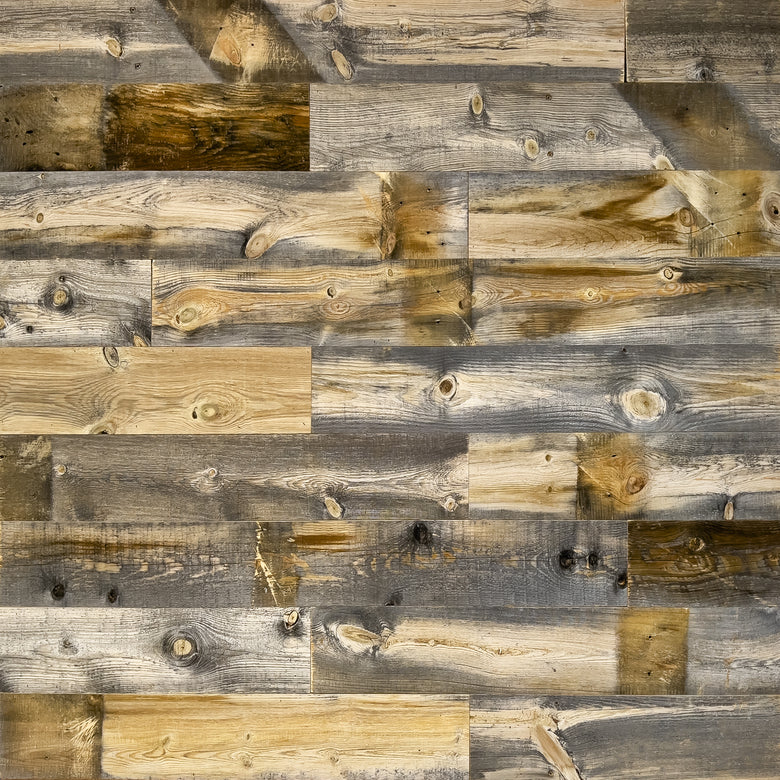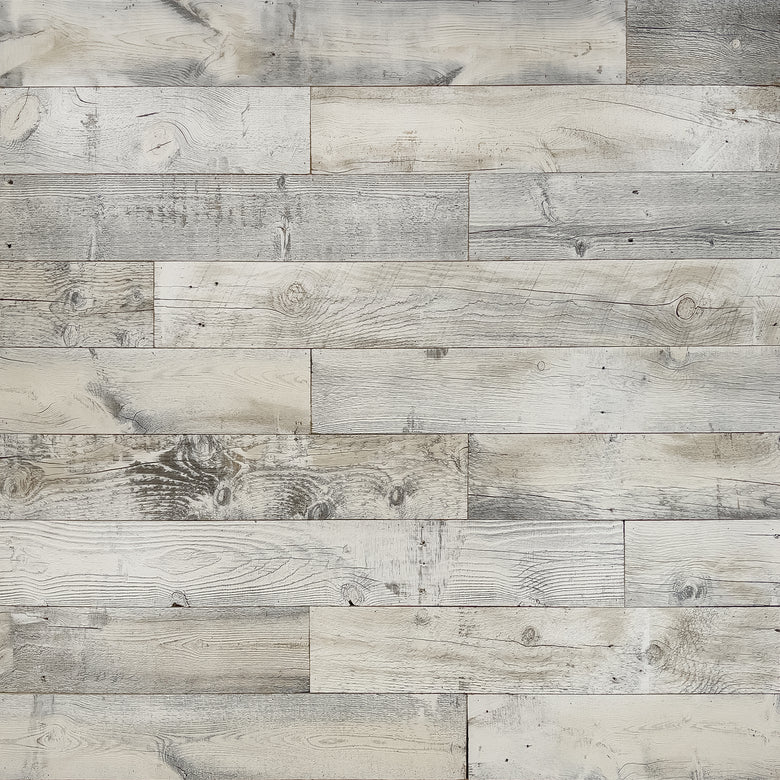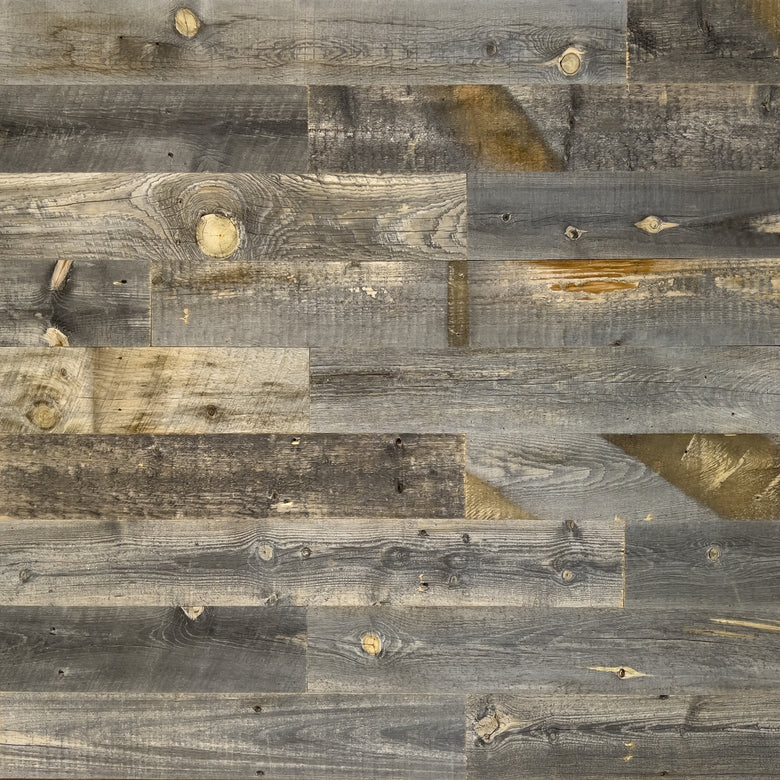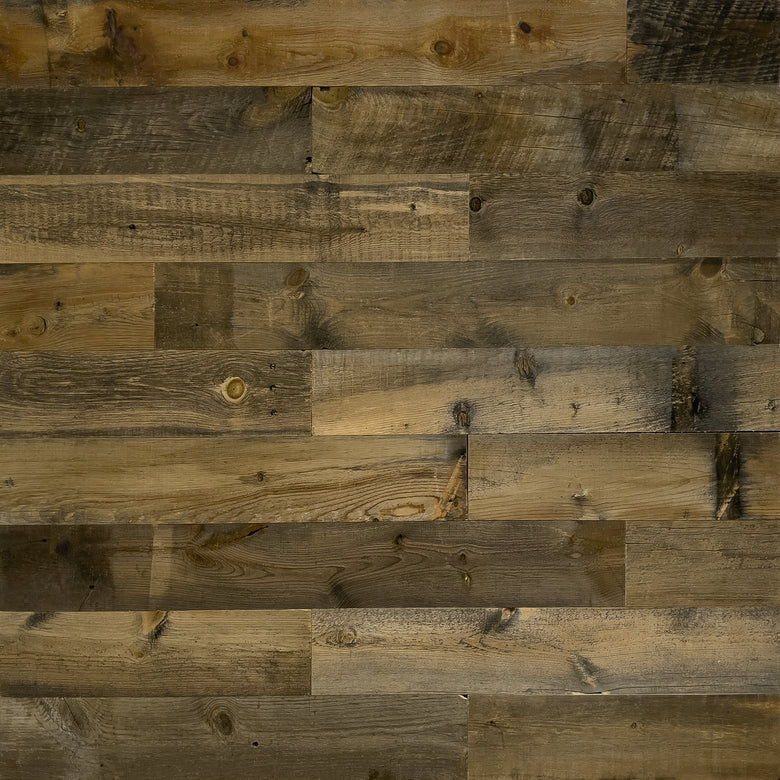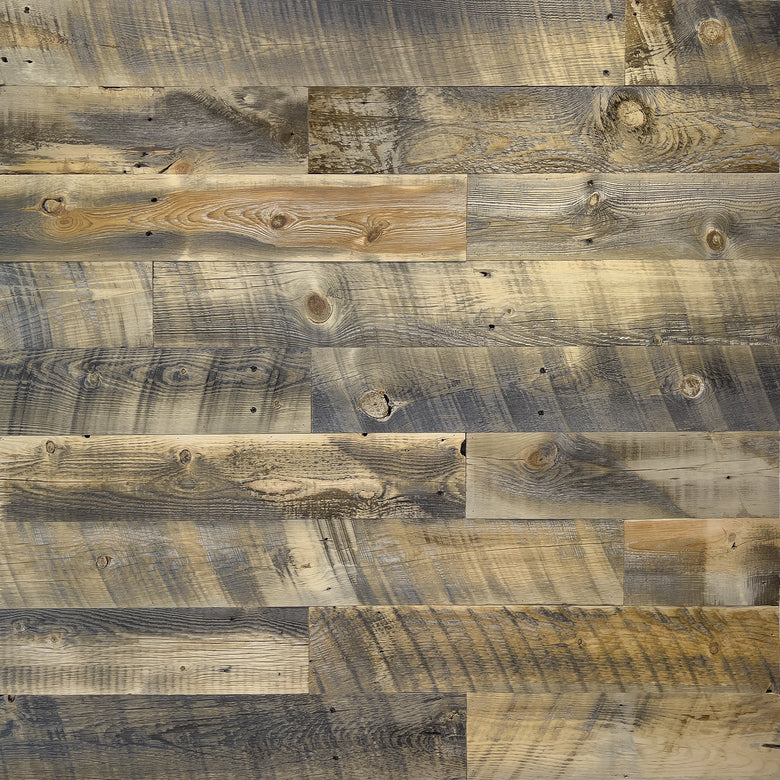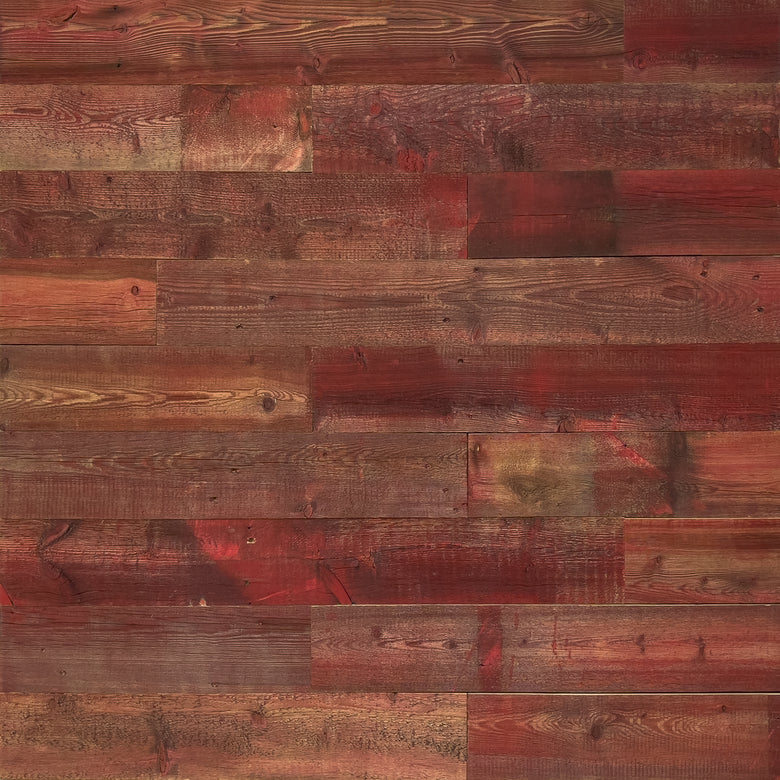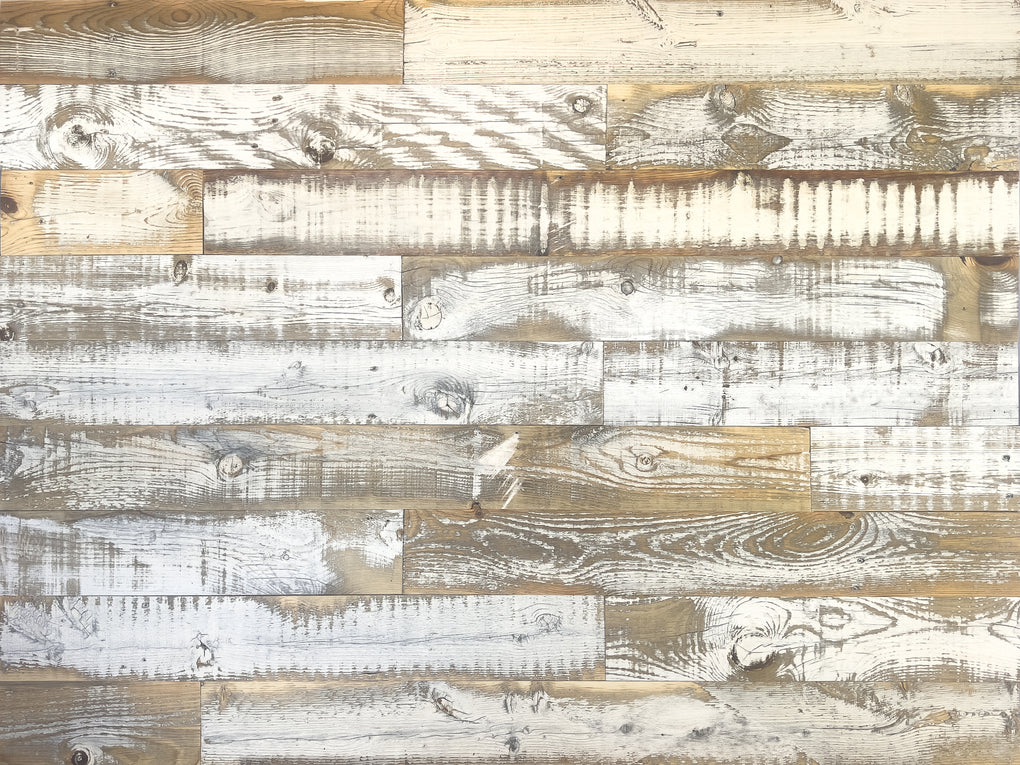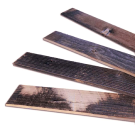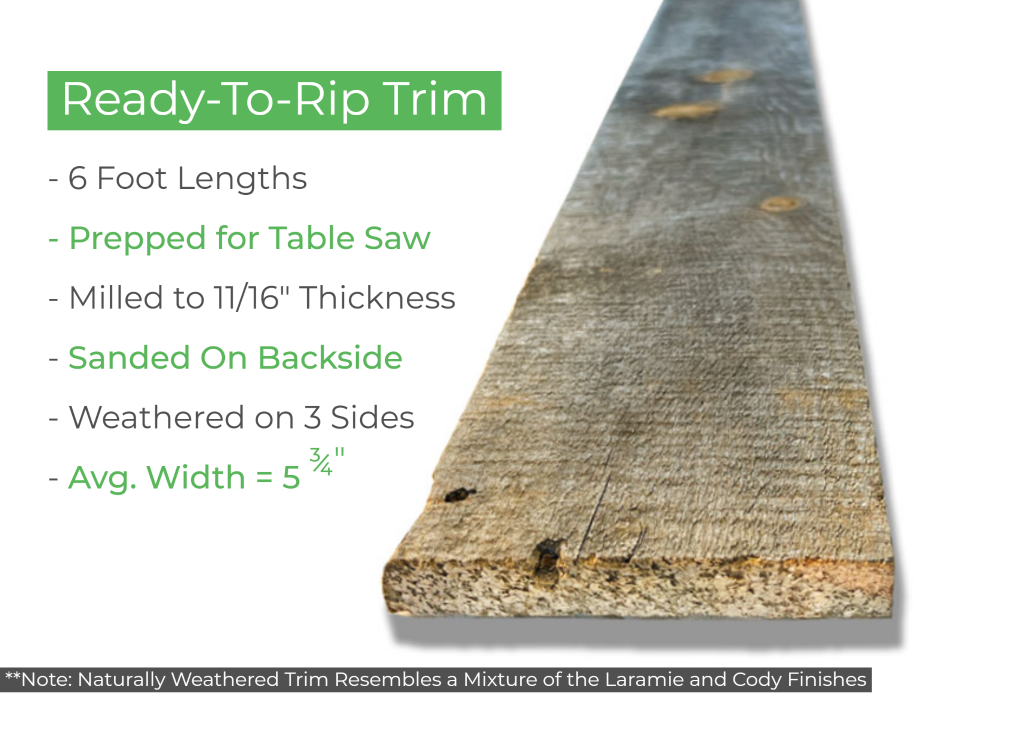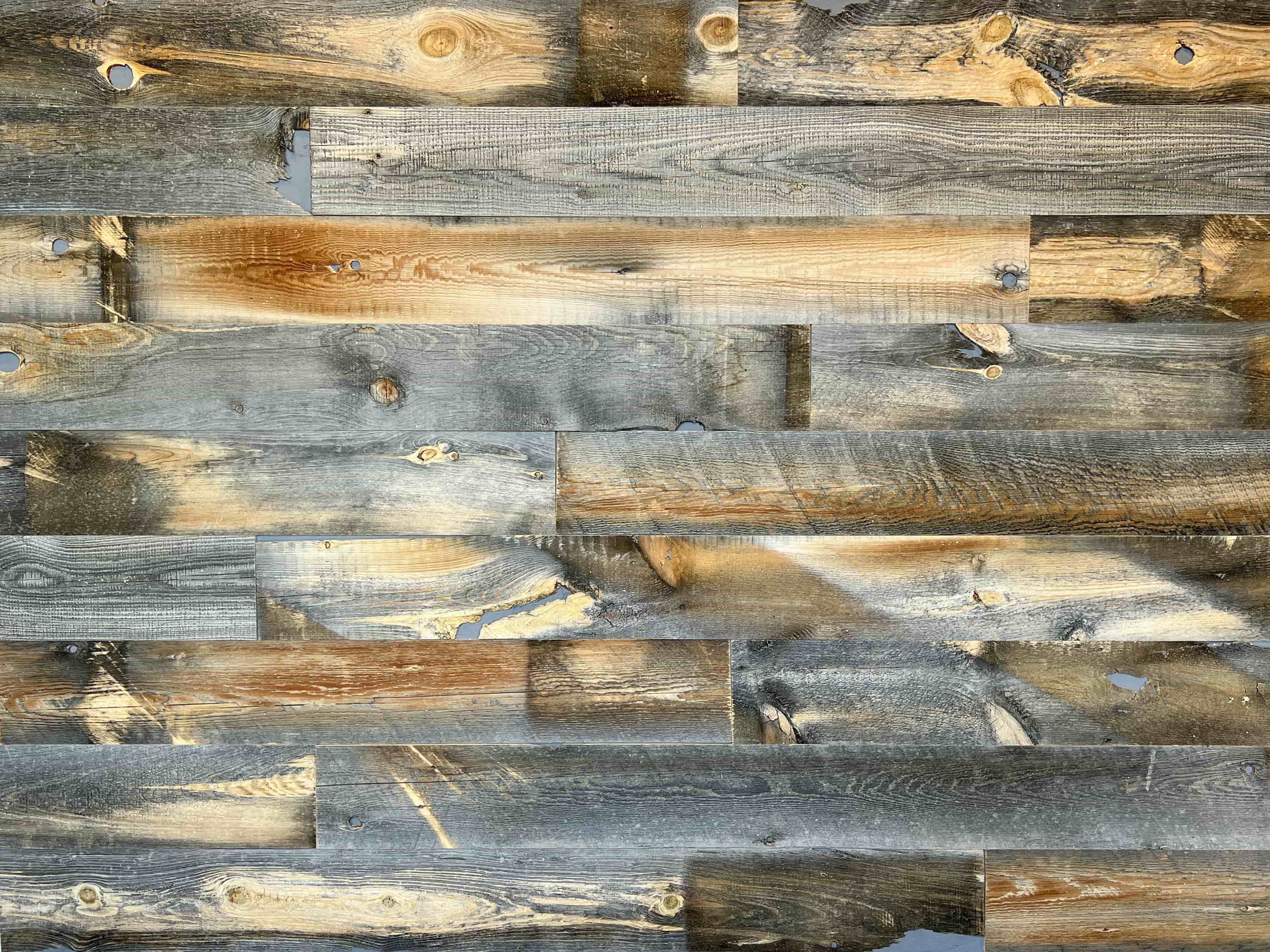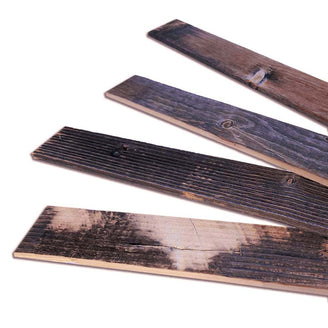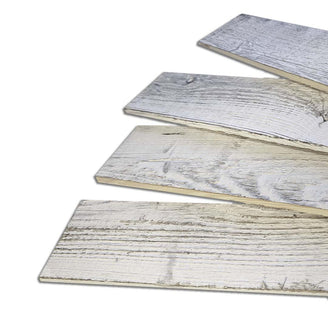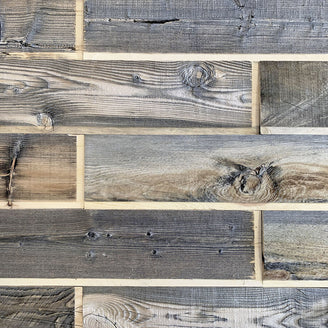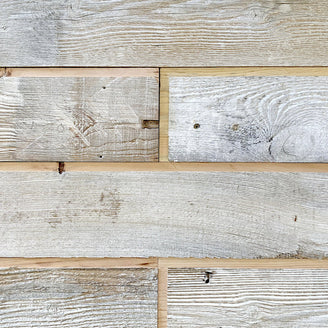Custom Patterns and Creative Layouts
For a unique appeal, consider custom wood ceiling patterns. A herringbone design (see photo below) uses short planks arranged in a V-shape, creating movement across your ceiling. This intricate pattern requires careful planning but results in a stunning feature that guests will notice immediately. Mixed-width boards offer another creative option, combining narrow and wide planks for visual interest and rhythm.

Even arched ceilings can feature reclaimed wood. Shorter boards can follow gentle curves while maintaining their rustic appeal. Working with various board lengths lets you adapt to any ceiling shape. Whatever pattern you choose, proper lighting will highlight the natural grain patterns and create a warm, inviting atmosphere in your room.
Room-by-Room Ideas and Applications
Different rooms call for different approaches when installing a wood ceiling. Let's explore how to best use reclaimed wood in key areas of your home.
Living Room Design Ideas
Your living room is perfect for making a bold statement with a wood ceiling. Since this is where you spend most of your time, invest in a design that adds both comfort and style.

Popular living room ceiling features include:
-
Full plank coverage paired with rustic wood beams
-
Natural wood tones that complement existing furniture
-
Statement light fixtures mounted on exposed beams
-
Accent sections over seating areas or fireplaces
Master Bedroom Styles
The master bedroom calls for a more subtle approach. Here, your wood ceiling should create a peaceful retreat. Many homeowners choose light-colored wood or whitewashed finishes that pair beautifully with white walls.

For bedroom ceilings, consider:
-
Simple plank patterns that promote relaxation
-
Soft lighting options that highlight wood grain
-
Gentle contrasts between wood tones and wall colors
-
Small accent beams for architectural interest
-
Sealants to protect against high humidity
Dining Room Features
Your dining room ceiling can help create the perfect atmosphere for gatherings. A wood ceiling here often becomes a conversation piece during meals. Focus on designs that look good both day and night, since dining rooms see use at all hours.

Natural wood adds warmth to your dining space through:
-
Custom patterns that frame your dining table
-
Strategic placement of light fixtures
-
Coffered ceiling designs for formal dining rooms
-
Rustic touches that complement your dining room decor
Each room in your home presents unique opportunities for incorporating reclaimed wood ceilings. By matching the right design to each space's purpose, you'll create rooms that feel both intentional and inviting.
Installation Tips and Considerations
Before starting your reclaimed wood ceiling project, you'll need to plan carefully. Whether you're covering a popcorn ceiling or starting with a blank surface, proper preparation makes all the difference in your final result.
Surface Preparation
Start by checking your existing ceiling. If you have a popcorn ceiling, you'll need to remove it first. This job can be messy, so cover your floors and furniture before beginning.
Basic tools you'll need include:
-
Nail gun with appropriate fasteners
-
Level and measuring tape
-
Saw for cutting boards to size
-
Safety equipment (goggles, dust mask)
-
Sturdy ladder or scaffolding
Planning Your Layout
Take time to plan your pattern before installation. Measure your room carefully and account for any obstacles like light fixtures or vents. Lay out your wood planks on the floor first to check your pattern and mix up different wood tones for a natural look.
DIY vs Professional Installation
While installing a wood ceiling can be a DIY project, consider your skill level and the complexity of your design. Simple plank patterns might work for experienced DIYers, but intricate designs like herringbone or coffered ceilings often need professional help.

Factors to consider when choosing between DIY and professional installation:
-
The size of your room
-
Ceiling height and accessibility
-
Pattern complexity
-
Your comfort with power tools
-
Time available for the project
Remember that proper installation ensures your wood ceiling will last for years. If you're unsure about any step, consult with an experienced contractor who can either guide you or handle the installation.
With pattern complexity, you should also consider that there will be more waste. For herringbone or chevron designs, we recommend ordering 20-25% overage to account for waste, while a start horizontal/vertical design will only need 10-15% overage.
Choosing the Right Reclaimed Wood
What to Look For
When selecting ceiling panels, consider both aesthetics and functionality. The best reclaimed wood for ceilings should be properly dried, cleaned, and prepared for interior use. Look for materials that have been carefully processed to remove any unwanted elements while preserving the natural weathering and character marks that make each board unique.
Finding the Right Product
For most ceiling installations, bulk wood paneling is the ideal choice due to the typically large quantities of paneling required. Centennial Woods' lightweight paneling makes installation significantly simpler while delivering the authentic character you want. This option works beautifully for most ceiling applications, creating stunning results with easier handling and reduced installation time.
If your project includes dropped ceilings or requires special transitions, consider adding reclaimed wood trim to complete the look. While trim isn't needed for every project, it's essential for certain architectural details where a polished finish matters.
For installations where you're not working with a flush surface like drywall, plywood, or sheetrock, three of our milled siding options can provide the perfect solution for attaching to studs:
-
S3S (Surfaced-Three-Sides)
-
Shiplap
-
Tongue-and-Groove (T&G)
Ready to start your reclaimed wood ceiling project? Visit our wood samples page to try before you buy and find the perfect match for your space. For contractors, our team is here to help you choose the right products for your next project. Experience the quality of Centennial Woods' reclaimed wood products and see why we're the ideal choice for your next ceiling project.



